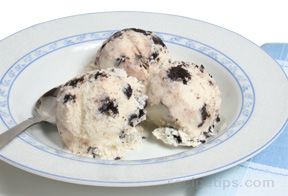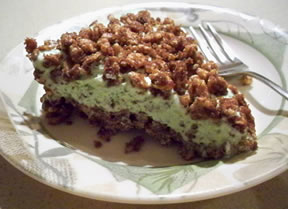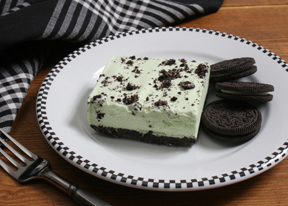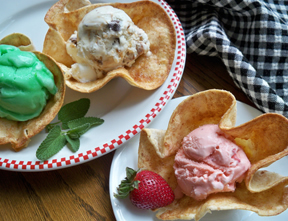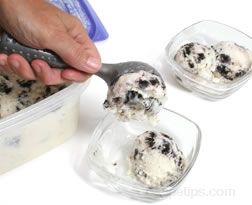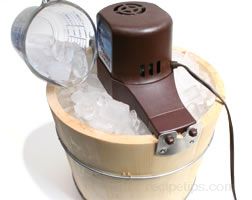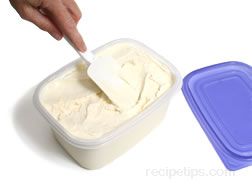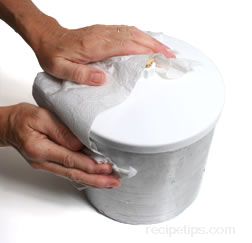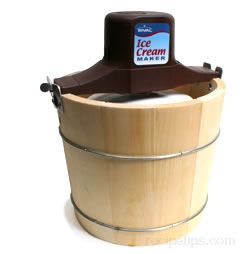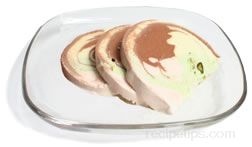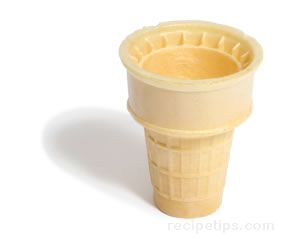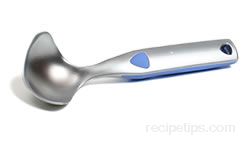Similar Content to: Ice Cream Maker
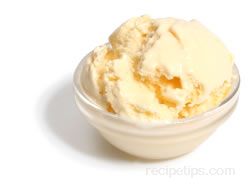
Commercially sold brands may also contain artificial flavorings and colorings and most brands contain ingredients to slow the melting process and reducing the formation of ice crystals, which may include carob bean gum, carrageenan, and guar gum. A variety of flavorings are continually being developed with the most common being vanilla, chocolate, and various fruit extracts, any of which may also include solid ingredients such as nuts, candy chips, and pieces of fruit.
In Spain, helado is a term used to refer to ice cream, or gelato in Italian. The Italian variety is more dense and not as fluffy or airy as the American ice cream, which is accomplished by removing more of the air from their product. American Ice Cream manufacturers can increase the volume of air in the product by adding "overrun" a term used to denote added air which may range from 0 to 200 on the scale of air added. U.S. food regulations allow the volume of Ice Cream to be increased by 100%, which is too much air for a typical Ice Cream product. The average amount added is generally in the range of 25 to 50 overrun will contain approximately 12.5% to 25% air, resulting in a softer and ligher textured product. The more air, the faster the melting, so manufacturers are careful not to add too much air to the product.
French ice cream, referred to as "crême glacée" or "frozen custard" typically contains egg yolks cooked into a custard base as one of the main ingredients and may be labeled by some manufacturers as "French-Style" ice cream to denote a richer and creamier-textured variety containing from 12.5% to 17% butterfat in addition to the egg base. Many ice cream manufacturers who do not add eggs or extra butterfat, attempt to produce varieties that equal the French-style flavor and texture by adding extra substances to the Ice Cream mixture. Emulsifiers such as mono- and diglycerides are added to the Ice Cream as a means of holding the fat particles together so they don't separate, thus creating a smoother and creamier texture, similar to the use of eggs in French-style Ice Creams.
Use caution when storing Ice Cream as it readily aborbs other food odors so it is wise to place it in a sealed, airtight bag when storing it. As it is scooped from the container, use a piece of wax paper placed over the surface of the ice cream to prevent the formation of ice crystals. Similarly, frozen Ice Cream will taste like a stale freezer when allowed to be kept too long in a frozen form. If placed in an air tight container or sealed in a freezer bag, Ice Cream will last longer, keeping its original rich flavor.




